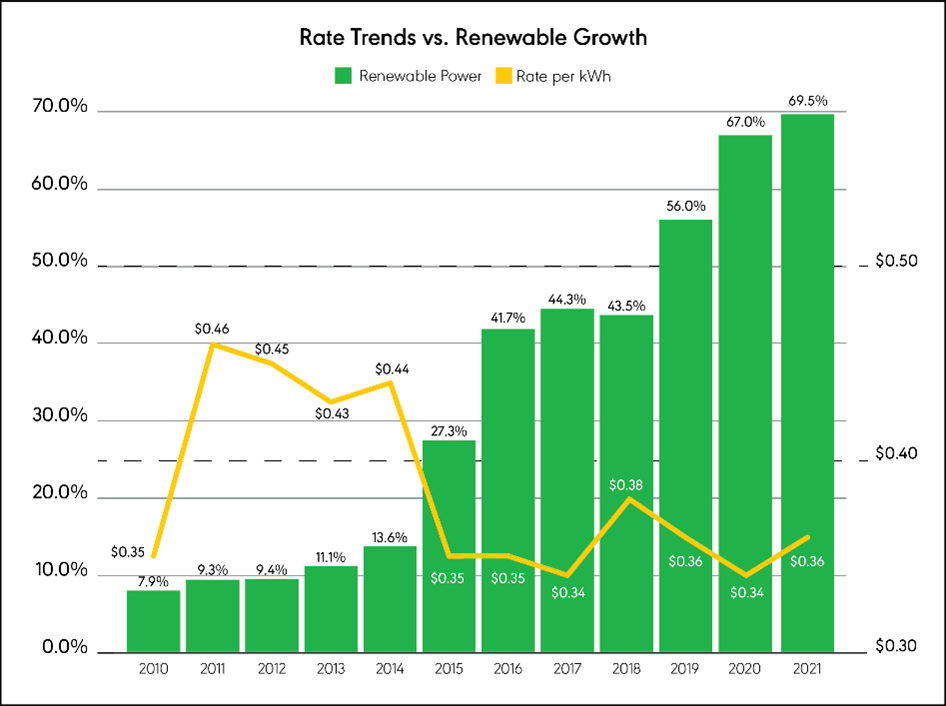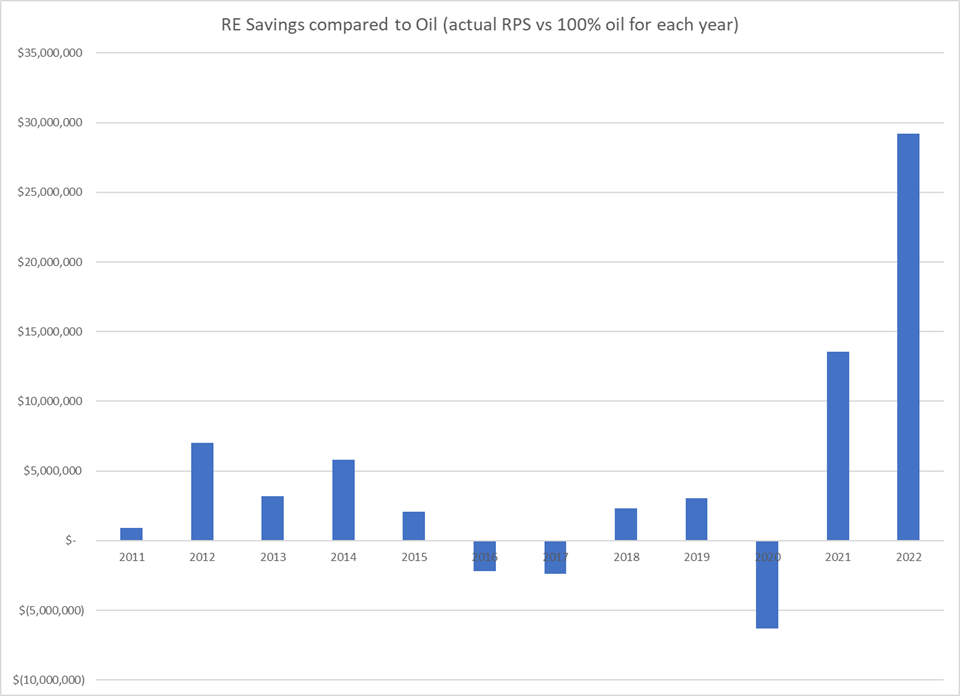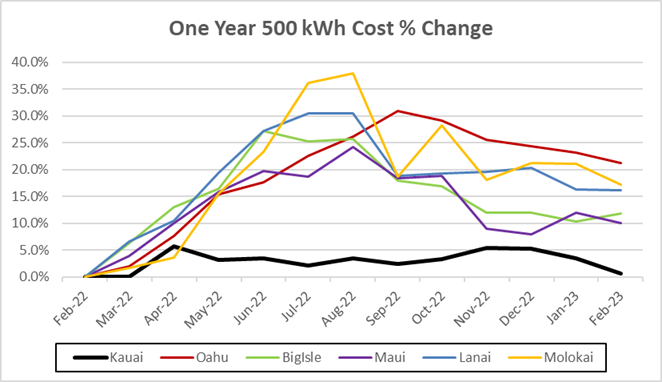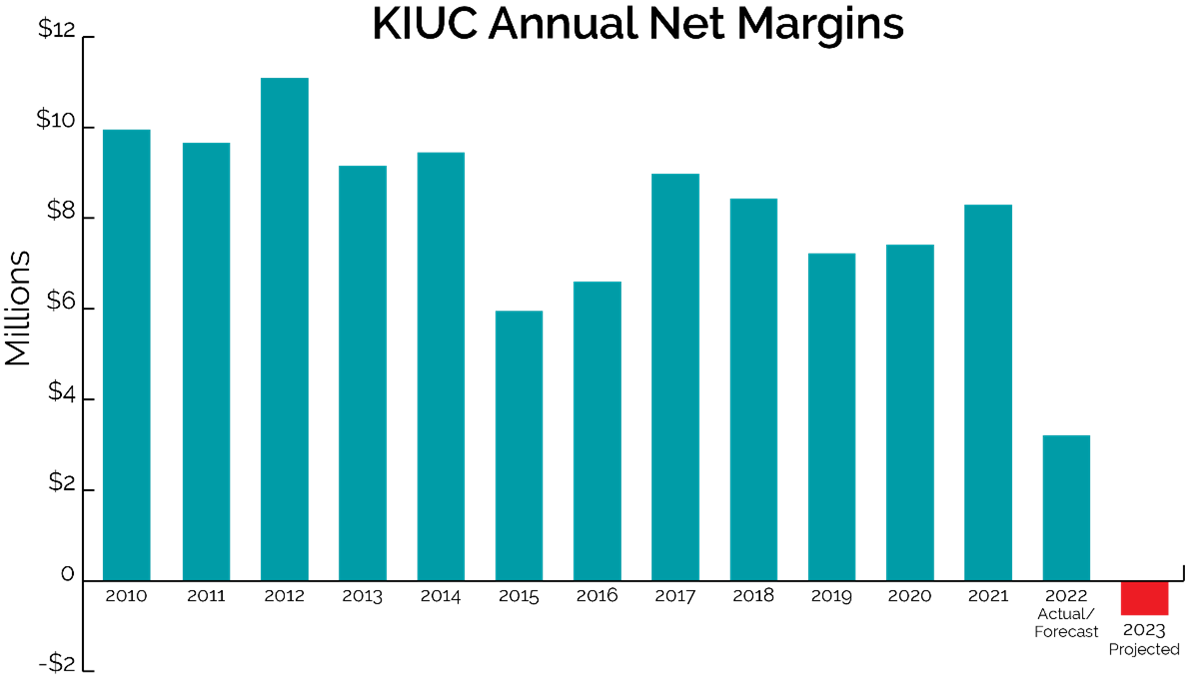
Send us your questions or comments!
Mahalo for your interest in KIUC's pending rate case. On December 28, 2022, KIUC filed a request for a revenue increase with the Hawaii Public Utilities Commission (PUC). On November 27, 2023, the PUC issued an interim decision and order allowing KIUC to increase rates pending a final decision. The interim increase became effective as of January 11, 2024. More information on that decision can be found on this page under FAQ's, News and Updates and PUC Filing Documents.
It's important to us that our members have comprehensive and current information. Please check back here for updates.
The last base rate increase was granted in 2010. Since that time, there have been cumulative inflation impacts of 37%, while KIUC sales have increased less than 5%. A rate adjustment was necessary for KIUC to maintain financial stability and meet lender requirements.
KIUC/'s proposed rate increase was designed to collect sufficient revenue for operations while avoiding excessive financial impacts to members.
A base rate is a fixed kilowatt hour (kWh) charge for electricity consumed that is independent of other variables, such as the current price of oil.
KIUC has requested a base rate increase only twice since starting operations in 2002. The first base rate increase was approved by the Hawaii Public Utilities Commission in 2010.
Spread over the 12 years since the last base rate increase, the approved interim increase calculates to less than 1% per year.
KIUC's base rate remains the same from month to month. When posting its monthly kWh charge for electricity, KIUC includes an Energy Rate Adjustment Clause – or ERAC – which is the amount KIUC is allowed to adjust rates monthly, primarily based on the current cost of oil. When the cost of oil is low, the ERAC may result in a decrease of the base rate for that month. When the cost of oil is high, the ERAC may result in an increase in the base rate for that month.
KIUC’s rates have stabilized significantly over the past ten years, thanks in great measure to replacing fossil fuel with renewable energy purchased under long-term, fixed price power purchase agreements. KIUC estimates that increasing use of renewables has saved KIUC members more than $56 million since 2010. The first chart below illustrates how rates have stabilized as the percentage of renewables have increased. The second chart estimates the amount of savings achieved each year by displacing diesel with renewable generation.


That depends on the current cost of oil. However, over the past ten years, renewables have been less expensive than oil most of the time.
As an illustration of this, with 70% of KIUC’s generation coming from renewables in 2021, the impact of the recent oil price spike was minimal for members. While electricity rates on Kauai rose between 5% and 10% in 2021 and 2022, the rest of the state has experienced increases from 30 to 50%. This is because KIUC's renewable generation is based on long-term power purchase agreements at fixed prices. This buffers KIUC and its members from spikes in oil prices.
KIUC estimates that renewable generation has saved members more than $50 million dollars when compared to energy that would have been produced at the cost of oil.

When KIUC began operating as a cooperative in 2002, its rates were the highest in the State of Hawaii: more than 70% higher than Oahu’s rates.
As of May 2022, KIUC had closed that gap and since then has posted the lowest residential rates of any island in the State of Hawaii. This is a remarkable achievement given that Oahu has more than ten times the number of customers as Kauai.
This has been achieved primarily by replacing the volatility of oil pricing with fixed-price renewables. Restructuring debt is another area in which significant savings have been achieved.
Since the last base rate increase in 2010, the Consumer Price Index (CPI) has risen a cumulative total of around 36% in Hawaii. While KIUC has managed to keep its controllable costs below the inflation rate, electricity sales have not kept pace. There is a growing gap between expenses and revenues, given that sales have increased only 5% since 2010.
Inflation, along with escalating costs associated with endangered species compliance and more than $80 million invested in necessary improvements to the grid and IT infrastructure, have created pressure on KIUC’s balance sheet over time.
As a not-for-profit organization, KIUC must to maintain a comfortable net margin, which is the money left over from sales after subtracting expenses. In the past few years margins have decreased to the point that KIUC is in danger of no longer meeting lender requirements.

Note that the margins reported in this graph for 2020, 2021 and 2022 include Lost Gross Margins (LGM) KIUC has been allowed to accrue due to a loss in sales from COVID 19. Learn more about LGM here: https://tinyurl.com/3nbwj2td
Some of the major cost items incurred by KIUC since 2010 include:
- Capital expenditures of $88.8 million, including: IT/Cybersecurity enhancements, new substations to accommodate renewable energy facilities, transmission and distribution system replacements and upgrades, installation of LED streetlights island-wide, tree trimming and disaster recovery from Hurricane Lane in 2018 and the April 2018 flooding event.
- Habitat Conservation Plan costs totaling $64 million, including minimization measures such as line reconfiguration and installation of bird diverters, and mitigation measures such as predator control fencing and the Save our Shearwaters Program.
Since the last base rate increase in 2010, KIUC has managed to keep its controllable costs below inflation rate with the following measures:
- Reducing staffing levels from 161 full-time employees in 2009 to 134 in 2022.
- Replacing fossil fuel generation with renewables at an estimated savings of more than $56 million since 2010.
- Securing a Paycheck Protection Program loan $2.8 million, which was forgiven.
- Restructuring existing debt, which reduced debt service by approximately $2.7 million in 2020 and will save KIUC $5.5 million annually from 2021 through 2035.
New renewable projects currently in development, such as the West Kauai Energy Project, will further reduce dependence on fossil fuel and stabilize rates.
Like any business, KIUC cost of operation is impacted by inflation. The Consumer Price Index for Hawaii has risen cumulatively 35% since 2010. Although KIUC has been successful containing costs below the rate of inflation, the rise in costs over time coupled with a low sales growth rate has impacted net margins significantly. More information on KIUC’s financial condition can be found in the FAQ titled “Why was a base rate increase necessary?”.
The PUC's approved interim base rates became effective on January 11, 2024.
You can find current and past rate data on the KIUC website: www.kiuc.coop/rates
KIUC offers services to members so that they can manage their energy usage and reduce their monthly bills. You can review the numerous energy efficiency and rebate programs in the “Energy Wise” section of the KIUC website under the Member Services tab: www.kiuc.coop. Or call us at 808-246-4300 and ask for Energy Services.
- November 29, 2023: Constant Contact email to KIUC Members (PUC issues Interim DNO)
- April 12, 2023: The Garden Island
- April 11, 2023: Constant Contact email to KIUC Members (KIUC Addresses Misinformation Circulating About Pending Rate Case)
- March 30, 2023: The Garden Island
- March 27, 2023: KIUC Compliance Notice and Notice of Public Hearing
- March 20, 2023: Hawaii PUC Notice of Virtual Participation Option for Public Hearing
- March 9, 2023: Hawaii PUC Schedules Public Hearing for KIUC Rate Case
- March 7, 2023: PUC Notice of Public Hearing and Hawaii PUC Notice of Virtual Participation Option for Public Hearing
- December 28, 2022: KIUC Files Rate Case with the Hawaiʻi Public Utilities Commission
- August 28, 2022: The Garden Island
- KIUC letter to HPUC re: Tariff Sheets Effective January 11, 2024
- KIUC Rates Comparison - Test Year 2023 (approved interim November 27, 2023)
- PUC Interim Decision and Order No. 40404 (November 27, 2023)
- Settlement Letter_Agreement between KIUC and the Hawaii Division of Consumer Advocacy (November 3, 2023)
- KIUC Response to Friends of Mahaulepu Motion to Intervene (April 14, 2023)
- Order No. 39092 Regarding Completed Application and Other Initial Matters
- Exhibit 5: Comparison of Present and Proposed Rates
- KIUC Rate Case Application (1/2)
- KIUC Rate Case Application (2/2)
- Hawaii Public Utilities Commission website: search for Docket No. 2022-0208 at the Document Management System link
